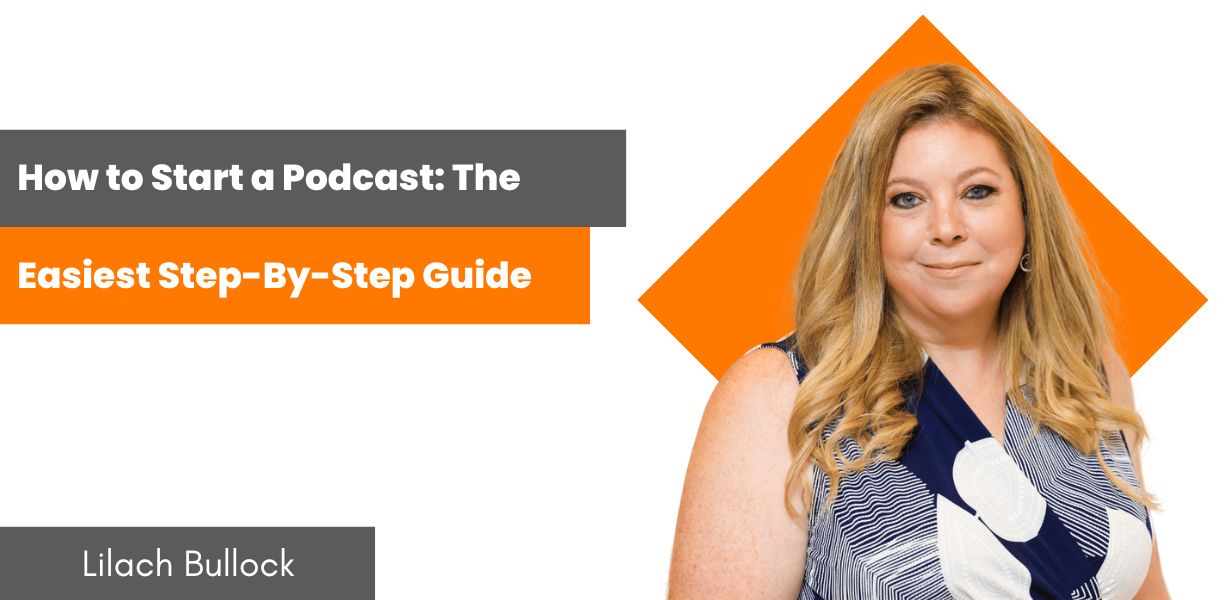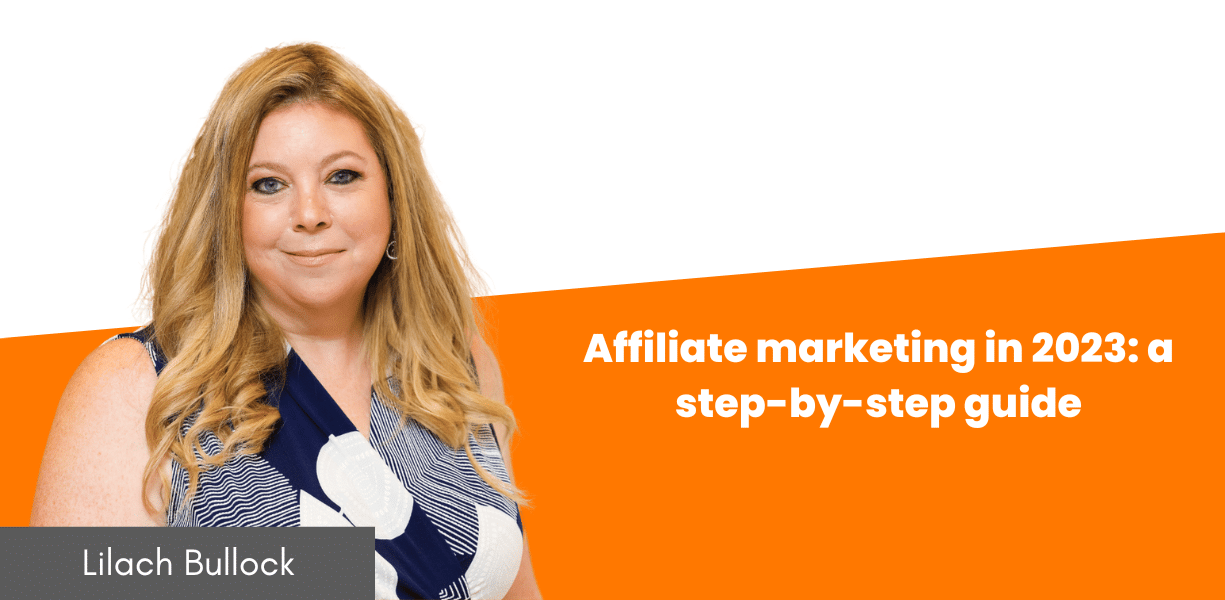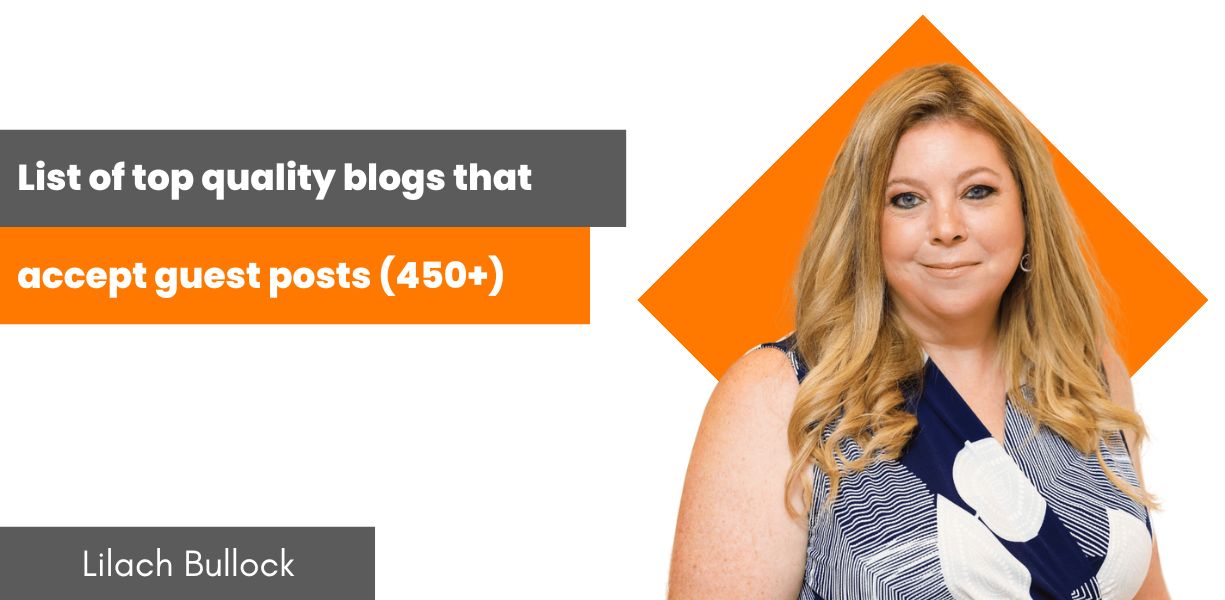Follow Lilach
How to set up a WordPress blog in 2022
In this blog, you’ll learn everything you need to know about getting your blog up and running, from picking your domain name to designing your blog.
In a recent blog post, we discussed choosing a niche for your blog.
By this point, you should have a clear idea of what niche to go for, based on your knowledge and skills but, most importantly, on how profitable your niche and audience are.
And now that you know what your blog business will be, it’s time to build your platform: the blog.
Step 1: Pick a domain name
Picking a good domain name is an essential step in building a business. After all, it will become known as the name of your blog, too.
Your domain name as a blogger can be:
- Your name or wordplay containing your name (a very easy way to come up with a domain name!)
- A keyword-rich domain name that clearly shows what your blog is about
You need to pick something easy to remember and easy to type in – you want people to hear your blog’s name and remember it immediately so that they remember you and your business and keep coming back for more.
Once you’ve got a list of ideas to start you off with, you can use a free domain name availability tool to see if your desired domain name is free to buy.
Plus, if your ideal domain name is already taken, it will give you similar suggestions that are free to buy, together with their pricing.
Step 2: Get website hosting
The next essential step is to get a hosting provider, and the great news is that some hosting providers also include one-click WordPress installation, which makes the process so much easier.
Step 3: Launch your WordPress blog
Once you’ve set up your hosting, you can start with WordPress in a few minutes.
Go to your cPanel dashboard in your account, click on My Sites, and then click on “Install WordPress”.
There are a lot of other great blogging/website platforms too, but WordPress is one of the most versatile and easy-to-use platforms, so I recommend it.
Step 4: Plan your blog’s sitemap
Before you start setting up a blog, one more step is planning your blog’s sitemap.
It might sound not very easy, but it’s easy; you need to list all the essential pages that your website will include.
The most important pages to include are:
- The homepage: the first page people see when they visit your blog; since you’re building a business, your focus here should be on what you can do for your audience and how you can help them grow/make money/learn new skills/etc.
- About page: here, you’ll tell your visitors a little about yourself and your blog.
- Start Here page: make it easier for your visitors and readers and put together a Start Here page where you list out all the most important pages, content and resources for your website: talk about your opt-in, your staple pieces of content (how-to guides, whitepapers, e-books, etc.) and provide links to your products and services pages – we’ll be talking about how to create your staple pieces of content in detail
- Product pages: if you sell any digital products, you should create a page where all of these products are easy to find; plus, you should also consider creating pages for each one.
- Services pages: likewise, if you’re going to offer any services (consulting, coaching, content writing, freelancing, etc.), you need to create a dedicated Services page (or several, for that matter)
- Blog: this will be the main blogging page where all of your personal blog posts will live
- Contact: a contact page where people can reach out to you directly via the form and or email (for more email marketing and email list tips visit here)
Step 5: Get your essential WordPress plugins
Another reason why WordPress is so great? All of the fantastic plugins.
These will help you get more out of your website, including setting up contact forms, adding social sharing options, adding sliders and helping improve your SEO.
Here are the essential plugins to start you off with:
- Gravity Forms – one of the absolute best online form plugins for WordPress (you need it for contact forms, opt-in forms, etc.)
- WP Rocket – to help improve your WordPress site’s performance (another must-have plugin)
- Landingi – easily build landing pages for your products, services and other promotions using ready-made templates.
- Social Warfare – add beautiful social sharing buttons (it’s my personal favourite – the buttons look great, they’re very versatile, and it’s one of the few tools that still show most shares from social networks, while other plugins are limited)
- Soliloquy – one of the best slider plugins for WordPress (and completely mobile responsive)
- SEOPressor – another top SEO tool that, likewise, helps you optimize your posts and pages for search engines
- BlogVault – the best backup plugin available for WordPress (it’s an essential tool as it keeps your website’s content safe)
- BeaverBuilder – super easy-to-use responsive WordPress page builder
Getting plugins is essential, and you should invest in all the basics to start with – this way, you can ensure that your website runs smoothly, that it’s optimized for search engines and that you’re engaging your visitors (to get more leads and sales ultimately!)
Step 6: Install Google Analytics and the Google Search Console and set up WordPress settings
Google offers two free and very valuable tools to website owners:
- Google Analytics helps you track your website visitors and to see exactly what they’re doing on your website (where they’re coming from, what pages they are visiting, how long they are spending on your website, what actions they take and so on)
- And the Google Search Console, which helps you manage and optimize your search engine optimization (like tracking your keywords and indexing new pages and blog content)
And as I mentioned before, they’re entirely free.
To install Google Analytics, go to their page here and sign up with your email. Once you’ve set up your account and account details, here’s what to do:
- Measure WEB presence
- Add your website URL
- Get the tracking code and add it to your website (you’ll find explanations on how to do so on the same page where the code is)
Next, the Google Search Console:
- Sign up for Search Console here
- Add and verify the ownership of your website
- Check out Google’s quick guide to Search Console here
And then there are your WordPress Settings:
- Click on Settings from your left-hand side menu.
- General Settings: add your site title, tagline, time zone, etc.
- Permalinks: decide the structure of your blog posts’ URLs; for example, I use the Post Name format (as it’s great for SEO: lilachbullock.com/post-name/
- Go through the rest of the settings to select your preferences (writing, reading, media, etc.) – all very self-explanatory and easy to complete
Step 7: Get a theme, design your WordPress blog and build your blog pages
Now it’s time for the fun stuff – designing your new WordPress blog. However, it’s also the most time-consuming of these processes – depending on how much you want to customize your theme.
Thankfully, you don’t need to be a designer to be able to create a beautiful website – that’s the beauty of using WordPress.
All you need to start with is to get a theme.
There are plenty of free themes, but the truth is, they’re not as beautiful or as complex and customizable as the premium ones, so if you’re serious about your blog business, I recommend you go for a premium theme.
Once you’ve picked a theme and installed it on your website, go to Appearance in your WordPress dashboard and click on Customize to start editing and customizing your website.
Quick tip: to get a logo designed quickly, you can use Canva and design it yourself, with the help of your templates. I recommend getting their Pro account as well as that means you’ll have access to more free images and templates and you’ll need this tool a lot in your blogger journey (for creating blog imagery, banners, social media updates, ads and many more).
Once you’ve designed your website, it’s time to add all of your blog pages, which you planned earlier in step 4, Sitemaps.
Step 8: Optimize your blog for search engines
Install the SEOPressor plugin on your website to easily optimize your pages for search engines:
- Optimize each page (and later on, blog posts), for up to 3 different keywords
- Add H1 (headings) tags to each page
- Add page titles and meta descriptions
The best part is that even if you’re not that familiar with SEO yet, SEOPressor will give you specific suggestions on what to do to better optimize your website.
Plus, it will also suggest more keywords to use throughout your page’s content and help you write a blog post as well as those all important blog post ideas so that you can rank higher up in search results. This will help you get found on the popular search engine Google and also alternative search engines.
Another essential aspect is your website’s speed.
Not only because it’s a better experience for your visitors but also because it will help improve your SEO – Google puts a great price on website speed, so this should be a priority.
To help, install the WPRocket plugin on your website, as it’s one of the best plugins for improving website performance (minify CSS and HTML, page caching, image lazy loading and other useful features that help speed up your website).
And that’s it – your blog is ready for launch!
Now, all you need to do is learn how to start creating content for your blog, as well as create a powerful opt-in.
In the meantime, get started on creating your blog; here’s a wrap-up of all the steps you need to take to launch your blog:
- Pick a custom domain name
- Get web hosting and 1-click WordPress install
- Launch your WordPress blog
- Plan your blog’s sitemap
- Install basic WordPress plugins
- Install Google Analytics and the Google Search Console
- Get a WordPress theme and start designing your blog
- Optimize your blog for search engines using SEOPressor

Follow Lilach















